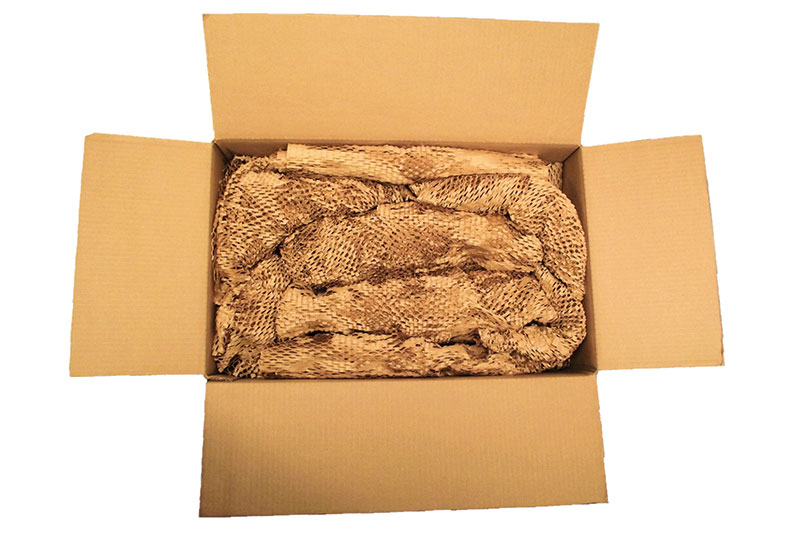There’s more than one way to reduce shipment damage
Despite all the emphasis on sustainability lately, protective paper packaging also needs to make the performance and economic case to replace plastic. In this story, it does just that.
More than a year ago, this column introduced you to HexcelWrap, a kraft paper alternative to protective plastic wrapping for item shipment. Its most colorful claim to fame is the ability to protect 5-liter bottles of cranberry juice from in-transit breakage. No small feat, and a noble achievement all at once.
Since then, HexcelPack LLC has come up with a complementary idea. Why not use the same hexagonally cut and interlocking kraft paper to fill shipping carton voids? And so, HexaFil has joined the fray to replace plastic-based void fill options including bubble wrap, air pillows and foam.
As you would expect, HexcelPack partner Lorne Herszkowicz takes the sustainability angle here quite seriously. In fact, he fully expects California to ban single use plastic in the not too distant future. And as California goes, so goes the nation is the general expectation.
But here’s what’s even more interesting in Herszkowicz’s take on the value of the HexcelPack line of kraft paper wrapping and void materials.
“Sustainability and environmentally friendly are an added benefit. The cost savings from improved product protection and damage reduction are even more important. Another great benefit is the ease of use in an existing pack station environment,” says Herszkowicz. Now, that’s a strong statement. So, let’s explore a little.
Let’s start with the material itself. Which, by the way, actually costs 8% to 12% more than traditional protective plastic packaging materials. And as Herszkowicz explains, “if a company makes its buying decision solely on upfront materials costs, this approach goes nowhere.” Fortunately for him there’s another path.
This slit paper technology has a three-dimensional hexagonal design that, when expanded, spirals like a helix and allows the paper to flex and absorb pressure. Once compressed and released, the void fill returns to its original shape. There are no permanent impact points, says Herszkowicz.
It’s this crush-and-return (or if you prefer, no memory) capability of the void fill that provides protection to the items in a shipping box. And he says protection is only enhanced when the void fill literally (and naturally) interlocks with the item wrap.
Now let’s put this into the real world. Herszkowicz cites the instance of a company that ships 8.4 million packages a year. Reduced damage with the HexcelPack materials saved $4 million in a single year. And if that’s not impressive enough, Herszkowicz says the three largest retailers use the materials in their e-commerce operations.
And since no good update story doesn’t take a look to the future, here’s what Herszkowicz said. Alternative materials such as paper have to make their mark on performance. The key advocates today are younger people as well as operations and supply chain managers who understand and accept the need to balance performance with the inevitable drive to sustainability.
“But in the next few years, the consumer will drive the change to alternative materials especially in e-commerce,” says Herszkowicz. That’s a tough one to count out these days.













